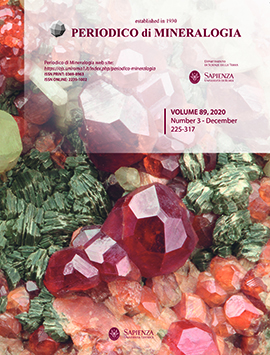Evolution of ore-forming fluids in the Sarilar gold-bearing silicic veins: evidence from fluid inclusions and sulphur stable isotopes studies, East-Azarbaidjan, NW of Iran.
Keywords:
Keywords, Stable isotopes, Fluid inclusions, Mineralization, Epithermal gold, Sarilar, East-Azarbaidjan.Abstract
The Sarilar gold-bearing veins-veinlets, as a part of the Arasbaran metallogenic zone, is located in East-Azarbaidjan province, NW of Iran. The principal hydrothermal alterations in this area are silicic, argillic, phyllic, and propylitic. The host rocks are the Eocene pyroclastic and volcanic lavas with intermediate composition. Five generations of quartz-sulphide veinlets were identified in the study area. Pyrite is the main primary sulphide mineral in these veins- veinlets, which is accompanied by lesser amounts of chalcopyrite, galena, tetrahedrite, and native gold. The supergene minerals such as iron oxyhydroxides, malachite, azurite, covellite, and chalcocite accompany the hypogene mineral assemblage. Gold mineralization in this area occurred as native gold within silicic veins-veinlets as well as inside pyrite.
Analyses of fluid inclusions in quartz crystals showed that the inclusions have salinity and homogenization temperature range of 0.35-2.57 eq.w (NaCl) and of 170-280°C, respectively. The sulphur isotopic analyses of pyrite showed that the values of isotopic composition of this element are close to the range of magmatic source. Finally, electron probe micro-analyses (EPMA) results indicated that the gold is hosted by pyrite and quartz in silicic veins. The data obtained from the structure and texture of the ores along with microthermometric data of the fluid inclusions indicate that the gold mineralization at Sarilar is of low sulphidation epithermal type.


